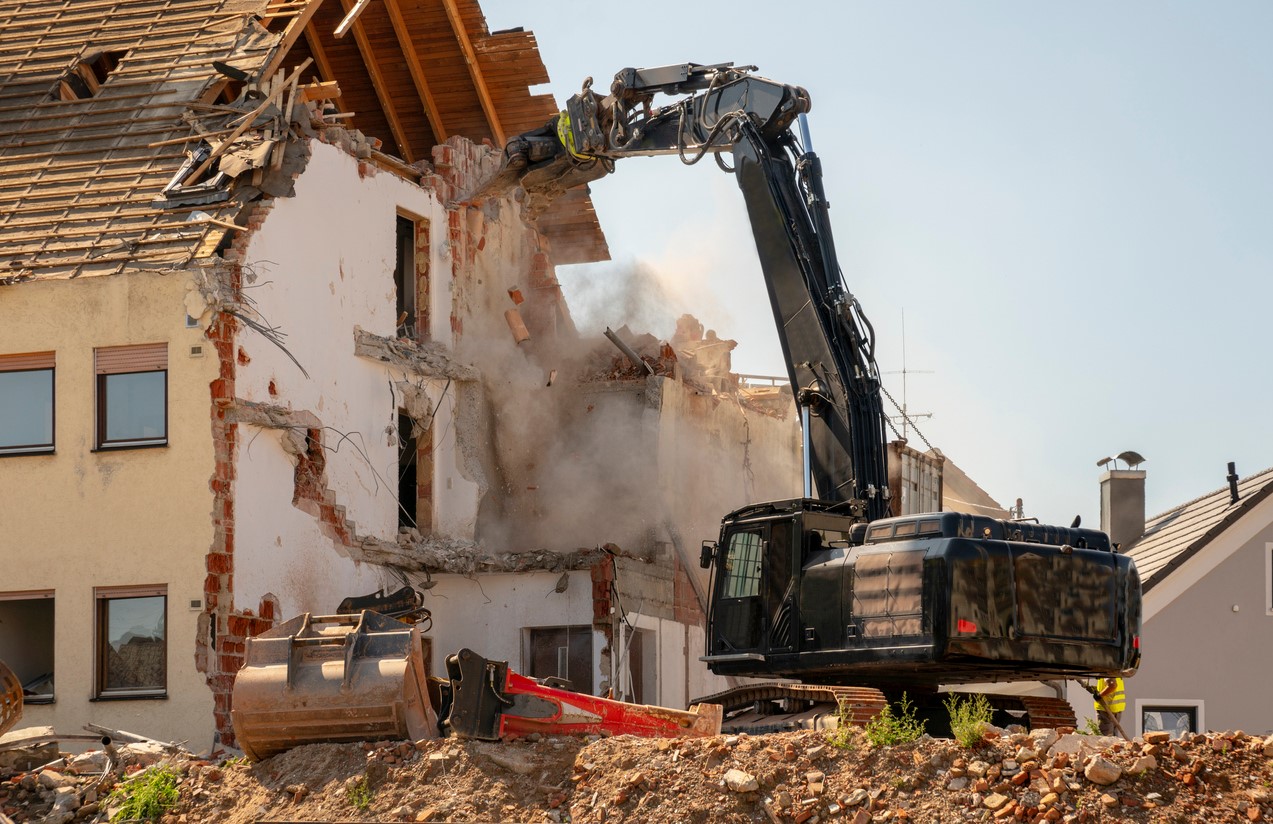
Commercial and industrial construction projects are heavily regulated by the government for good reason. They are dangerous sites for unskilled pedestrians passing by. They also emit a lot of dust, emissions and involve the transport of tremendously heavy objects. Not only should contractors and site owners be worried about passersby, they should especially be worried about their staff and the workers that are on site every day. One of the biggest fears is lead-contaminated airborne dust. This pollutant is often unseen but can cause serious health problems including permanent damage to the lungs, skin and brain if the levels are too high.
Too get ahead of the problem of lead contaminated dust, developers, contractors, workers, foreman and managers should all take preemptive action. A recent site near Oklahoma City was being built for chemical refining. Unfortunately, it included tear down of some existing buildings and construction of new ones that include a number of lead-based construction materials. Before they started to project, the team focused on safety and preparedness. They wanted to follow all the EPA standards to avoid getting sick.
They bought a NIOSH-certified respirator with a high efficiency particulate air filter. They purchased a HEPA vacuum cleaner and wet sanding equipment to keep all dust on the ground rather than in the air.
Because the refinery was such a huge job, they prepared areas to be quarantined and air locked for when demolition made air borne dust inevitable. They laid down heavy duty sheets throughout the site as well, making sure to tape it around the edges of the walls. Finally, they turned off all forced heating and AC vents to control all of the incoming and outgoing air.
With lots of preparation and thoughtfulness, the Oklahoma City site construction went off perfectly and nobody became ill from the lead contaminated dust.
According to the research published by Laurelhurst, large demolition equipment mills paint into dust that is not airborne. An article by Freep postulates that the airborne dust can spread to cover a radius of 400 feet from the original site.
Unfortunately, the demolition of these lead-contaminated homes lacks the proper law and regulation to govern the spread of airborne lead dust. Thus, lead dust is widespread as demolition of many houses are done cheaply.
However, many institutions and international organizations are looking into ways to curb this menace. For instance, the Wayne State University has revealed some ways in which workers at industry and commercial sites can minimize the creation of lead dust.
The publication elucidates techniques of protecting themselves and their immediate environment from the hazards of lead dust. The report also catalogs the risks involved before and after demolition when dealing with lead dust.
What To Do
There are some techniques that construction workers may employ to prevent the spread of airborne lead dust. These methods are elucidated in the OSHO technical manual by the US Department of Labor
- Water: Before and after demolition spray down a site with water to limit the formation of dust.
- Plastic cover fencing: Serves as isolation to limit spread and exposure
- Changing processes: Restrict the use of heat processes that generate lead dust and fumes
- Changing equipment: Use of vacuum blast cleaners to substitute for techniques that generate respirable lead dust.
Airborne Lead and Commercial Ventilation
Lead dust enters the air through a variety of means, which cause potential danger for employees and the general public who are near commercial sites. Lead can contaminate the air, water, soil, and general waste materials, all of which can enter the body. Lead is regulated in all of those industries in the Title IV of the Toxic Substances Control Act (TSCA), the Clean Water Act and Safe Drinking Water Act, and the Clean Air Act, among others. Lead is toxic to the human body and the body does not have a way to safely expel it. As a result, exposure to lead must be carefully managed. According to the World Health Organization, lead can damage the:
- brain,
- nervous system,
- circulatory system,
- skeletal system,
- and reproductive system.
Controlling Lead Exposure
Because lead can affect so many systems, OSHA, NIOSH, and the CDC all recommend lead exposure be limited. Lead contamination in water is controlled by city authorities, so commercial sites are primarily responsible for controlling exposure in waste materials and in the air. This is accomplished through ventilation systems, working with wet surfaces when airborne lead dust may be present, and properly disposing of lead containing materials.
Ventilation Basics
Proper air ventilation protects everyone exposed to harmful, toxic lead dust. Ventilation by mechanical means is the most effective form of filtering lead dust out of the air. There are two major types of lead ventilation systems -- closed-loop systems and direct exhaust systems. Both are effective, but each must meet the following standards:
- maintain an air flow of at least 50 feet per minute
- use multiple supply ducts in order to evenly distribute air flow throughout a closed building, pushing air away from workers
- uses negative air pressure to reduce exposure.
Ultimately, protecting all users from harmful lead can be tricky, but all OSHA guidelines for lead guidelines should always be met.
Being pressured with Air Quality compliance or soil migration?
Let ECOBOND® assist in your Lead Project with RCRA EPA compliance and lead airborne particulates.
Prior to blasting in your containment system why not treat it with ECOBOND®? Provides worker and vicinity residential safety, reduces airborne lead dust particulates at the same time seals lead and lead paint dust rendering it non-hazardous for disposal.
ECOBOND® - LeadDefender® is so much more than just paint! With our patented Paint-it-on Leave-it-on® formula! You no longer have to just cover up lead paint, you can treat it! ECOBOND® - LeadDefender® is a one-of-a-kind product and is the only paint product that seals & treats existing lead paint applications & controls the spread of airborne lead to reduce lead hazards.
